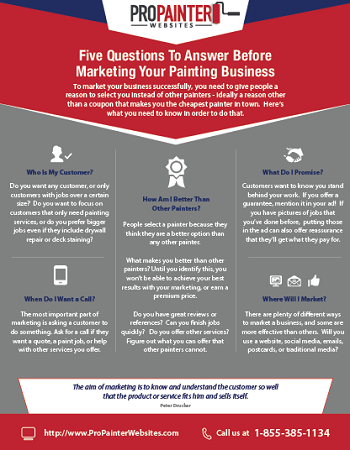Recognizing Seasonal Influences On Commercial Exterior Paint: Necessary Knowledge For Success
Recognizing Seasonal Influences On Commercial Exterior Paint: Necessary Knowledge For Success
Blog Article
Web Content By-Carlson Skafte
When you're planning a business exterior painting project, seasonal factors can make or break your outcomes. You'll want to consider exactly how temperature and moisture effect paint application and drying times. Choosing the right period can guarantee your paint adheres appropriately and lasts longer. Yet which periods are really the best for this kind of work? Allow' house color painting out the crucial elements that can affect your project's success.
The Effect of Temperature on Paint Application
When you're intending a commercial external painting job, the temperature can substantially impact just how well the paint sticks and dries.
Preferably, you intend to paint when temperatures vary in between 50 ° F and 85 ° F. If it's also cold, the paint might not heal correctly, resulting in issues like peeling off or splitting.
On the flip side, if it's also hot, the paint can dry out also quickly, preventing correct bond and leading to an uneven finish.
You must likewise take into consideration the time of day; morning or late afternoon provides cooler temperatures, which can be more positive.
Always examine the manufacturer's suggestions for the particular paint you're making use of, as they commonly provide assistance on the excellent temperature level range for ideal results.
Moisture and Its Result on Drying Times
Temperature level isn't the only environmental element that influences your business external painting task; moisture plays a significant duty as well. you can look here can slow down drying out times considerably, influencing the general top quality of your paint job.
When the air is filled with moisture, the paint takes longer to treat, which can bring about problems like bad adhesion and a higher risk of mildew growth. If you're painting on a specifically damp day, be gotten ready for extensive delay times between layers.
It's vital to check regional weather conditions and plan accordingly. Preferably, go for moisture levels in between 40% and 70% for optimum drying.
Maintaining these factors in mind ensures your job remains on track and delivers a lasting surface.
Best Seasons for Commercial Exterior Painting Projects
What's the most effective time of year for your industrial external painting tasks?
Spring and early loss are commonly your best bets. Throughout these seasons, temperature levels are light, and moisture levels are often lower, creating ideal conditions for paint application and drying.
Prevent summer season's intense heat, which can create paint to dry too promptly, bring about poor adhesion and finish. Similarly, winter season's cold temperature levels can hinder appropriate drying out and healing, risking the long life of your paint work.
Aim for days with temperature levels between 50 ° F and 85 ° F for optimum outcomes. Bear in mind to inspect the regional weather report for rainfall, as wet conditions can wreck your task.
Preparation around these elements ensures your painting job runs efficiently and lasts much longer.
Conclusion
To conclude, intending your commercial outside paint jobs around seasonal factors to consider can make a significant difference in the outcome. By scheduling work throughout the perfect temperature levels and humidity degrees, you'll guarantee far better bond and drying out times. Bear in mind to watch on regional weather forecasts and pick the right time of year-- springtime and early autumn are your best choices. Taking these actions will help you achieve a durable and specialist surface that lasts.
